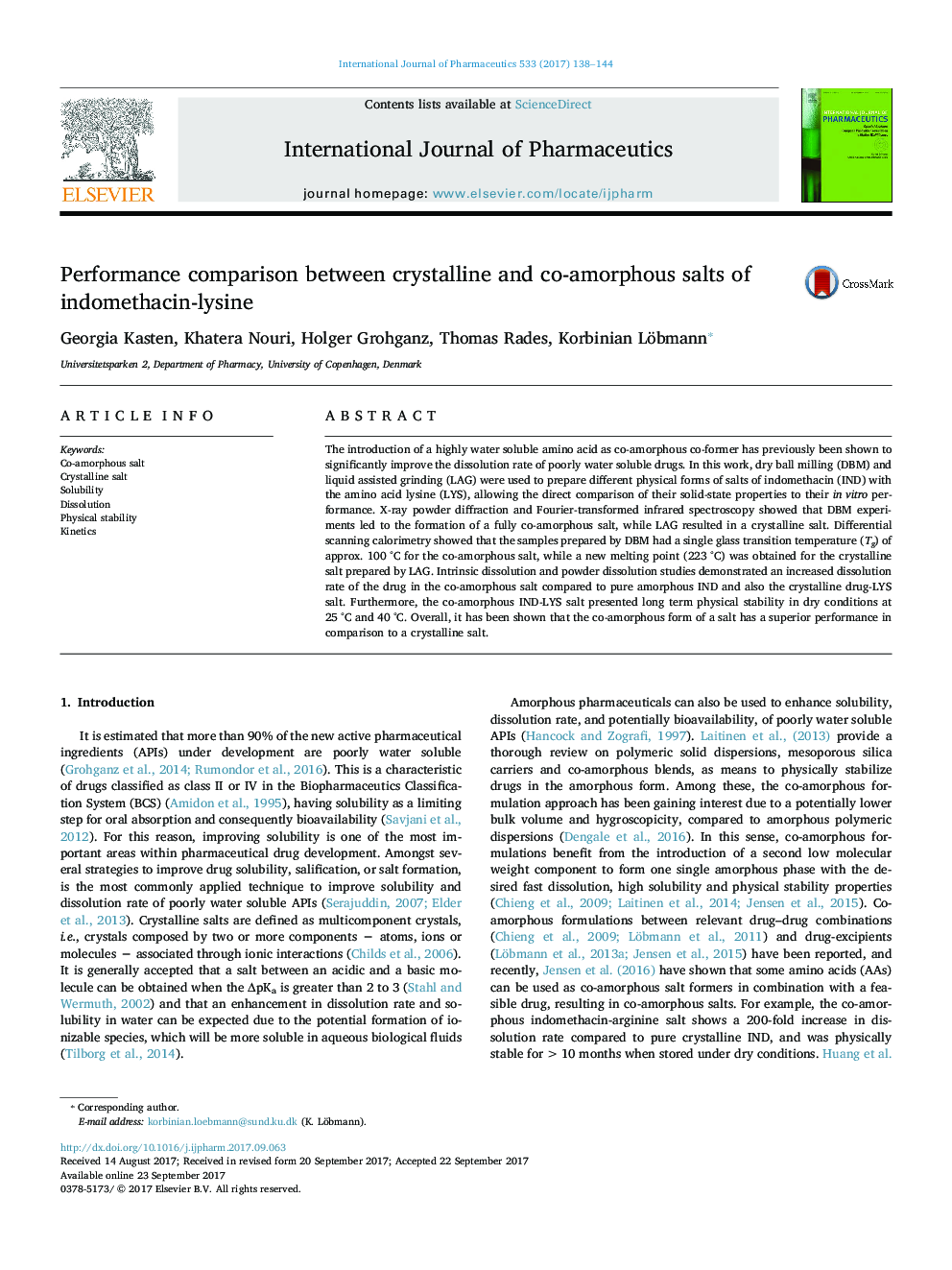| کد مقاله | کد نشریه | سال انتشار | مقاله انگلیسی | نسخه تمام متن |
|---|---|---|---|---|
| 5549949 | 1557280 | 2017 | 7 صفحه PDF | دانلود رایگان |
The introduction of a highly water soluble amino acid as co-amorphous co-former has previously been shown to significantly improve the dissolution rate of poorly water soluble drugs. In this work, dry ball milling (DBM) and liquid assisted grinding (LAG) were used to prepare different physical forms of salts of indomethacin (IND) with the amino acid lysine (LYS), allowing the direct comparison of their solid-state properties to their in vitro performance. X-ray powder diffraction and Fourier-transformed infrared spectroscopy showed that DBM experiments led to the formation of a fully co-amorphous salt, while LAG resulted in a crystalline salt. Differential scanning calorimetry showed that the samples prepared by DBM had a single glass transition temperature (Tg) of approx. 100 °C for the co-amorphous salt, while a new melting point (223 °C) was obtained for the crystalline salt prepared by LAG. Intrinsic dissolution and powder dissolution studies demonstrated an increased dissolution rate of the drug in the co-amorphous salt compared to pure amorphous IND and also the crystalline drug-LYS salt. Furthermore, the co-amorphous IND-LYS salt presented long term physical stability in dry conditions at 25 °C and 40 °C. Overall, it has been shown that the co-amorphous form of a salt has a superior performance in comparison to a crystalline salt.
203
Journal: International Journal of Pharmaceutics - Volume 533, Issue 1, 25 November 2017, Pages 138-144
